
Khandari: Agra's Hidden Gem
Discover Khandari in Agra: A vibrant neighborhood with bustling markets, delectable street food, and rich cultural heritage, perfect for a unique tourist experience.
Nestled in the vibrant city of Agra, Khandari offers a unique blend of traditional charm and modern conveniences. This neighborhood is a perfect retreat for tourists seeking to experience the local culture while staying close to the iconic landmarks. Khandari is renowned for its bustling markets, where you can find everything from traditional handicrafts to modern fashion. The street food here is a culinary delight, offering a variety of local delicacies that will tantalize your taste buds. Don't miss out on trying the famous Agra Petha, a sweet treat that originated in this city. In addition to its vibrant markets, Khandari boasts several parks and green spaces where you can relax and unwind. The neighborhood is also home to a number of historic sites and temples, providing a glimpse into the rich cultural heritage of Agra. With its friendly locals and welcoming atmosphere, Khandari is a must-visit destination for any traveler exploring Agra.
Local tips in Khandari
- Visit the local markets early in the morning to avoid the crowds and get the freshest produce.
- Try the street food but make sure to choose stalls that are popular with locals for the best taste and hygiene.
- Carry cash as many local vendors do not accept cards.
- Wear comfortable shoes as you will be doing a lot of walking.
- Take some time to visit the nearby historic sites and temples to get a sense of the local culture.
Khandari: Agra's Hidden Gem
Nestled in the vibrant city of Agra, Khandari offers a unique blend of traditional charm and modern conveniences. This neighborhood is a perfect retreat for tourists seeking to experience the local culture while staying close to the iconic landmarks. Khandari is renowned for its bustling markets, where you can find everything from traditional handicrafts to modern fashion. The street food here is a culinary delight, offering a variety of local delicacies that will tantalize your taste buds. Don't miss out on trying the famous Agra Petha, a sweet treat that originated in this city. In addition to its vibrant markets, Khandari boasts several parks and green spaces where you can relax and unwind. The neighborhood is also home to a number of historic sites and temples, providing a glimpse into the rich cultural heritage of Agra. With its friendly locals and welcoming atmosphere, Khandari is a must-visit destination for any traveler exploring Agra.
Iconic landmarks you can’t miss
Shaheed Smarak
Explore the tranquil Shaheed Smarak in Agra, a beautiful park dedicated to India’s martyrs, perfect for relaxation and reflection amidst lush greenery.
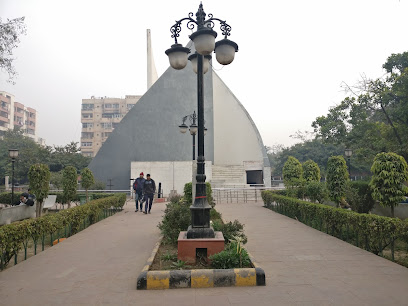
Sikandra Fort
Discover the exquisite Sikandra Fort in Agra, a stunning historical landmark and the final resting place of Emperor Akbar, embodying Mughal architectural splendor.

Chini Ka Rauza
Explore Chini Ka Rauza, Agra's hidden gem, where Persian architecture meets exquisite ceramic artistry in a tranquil setting.

Dhakri Ka Mahal
Explore the magnificent Dhakri Ka Mahal, a fascinating monument in Agra that showcases India's rich cultural and architectural heritage.

New Lajpat Kunj Park
Discover tranquility and natural beauty at New Lajpat Kunj Park, a perfect escape in Agra for relaxation and recreation amidst lush greenery.

The Red Taj
Discover the magnificence of The Red Taj, a historical landmark in Agra that showcases the grandeur of Mughal architecture and rich cultural heritage.

Kandhari Begum Tomb
Explore the serene beauty of Kandhari Begum Tomb, an exquisite historical landmark showcasing Mughal architecture in Agra.

John Hessing's Tomb (The Red Taj Mahal)
Explore the serene beauty of John Hessing's Tomb, the Red Taj Mahal, a stunning testament to Mughal architecture in Agra's historical landscape.

Tomb of Salabat Khan
Discover the serene beauty and historical significance of the Tomb of Salabat Khan, a captivating landmark nestled in the heart of Agra's memorial park.

Anandeshwar Sankatmochan Geyarah MukhiHanuman Mandir
Explore Anandeshwar Sankatmochan Geyarah Mukhi Hanuman Mandir—an exquisite Hindu temple in Agra, offering a peaceful spiritual retreat and rich cultural heritage.

Natural Pond
Experience the tranquility of the Natural Pond in Agra, a serene escape surrounded by lush greenery and local wildlife.

Unmissable attractions to see
Agra Fort
Explore the grandeur of Agra Fort, a UNESCO World Heritage site, showcasing Mughal architecture and rich historical significance near the iconic Taj Mahal.

Kanch Mahal
Discover the enchanting Kanch Mahal in Agra, a serene retreat showcasing Mughal architecture and rich historical significance.

The Shish Mahal (The Glass Palace)
Discover the exquisite beauty of The Shish Mahal in Agra, a historical marvel showcasing stunning mirror work and Mughal architectural elegance.

The Red Taj
Explore the beauty and history of The Red Taj, a stunning landmark in Agra, reflecting Mughal architecture and serene gardens.
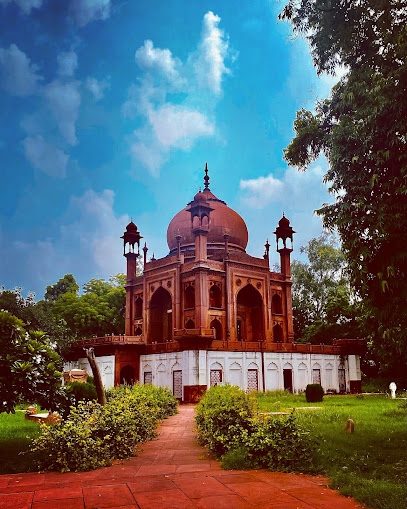
Agra
Explore Agra, where the majestic Taj Mahal and rich Mughal history create an unforgettable travel experience in India.

Essential places to dine
Sagar Ratna
Experience the best of South Indian cuisine at Sagar Ratna in Agra - a must-visit for every food lover seeking authentic flavors.

Achman Veg. Restaurant
Savor authentic vegetarian cuisine at Achman Veg. Restaurant in Agra – where every dish tells a story of flavor and tradition.
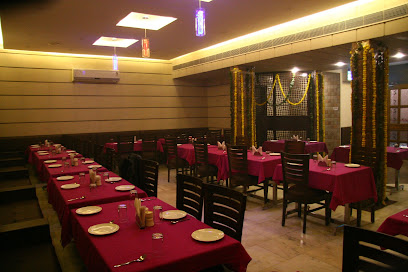
What The Food
Discover the rich flavors of India at What The Food in Agra - your go-to destination for delicious chicken and fast food delights.
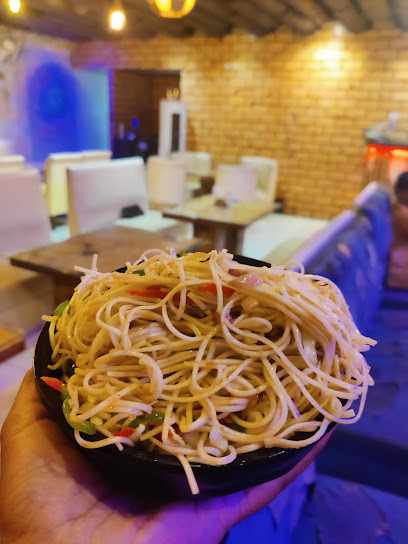
Ek Number - Twisted Indian Cafe
Savor the unique blend of traditional and contemporary Indian cuisine at Ek Number - Twisted Indian Cafe in Agra.
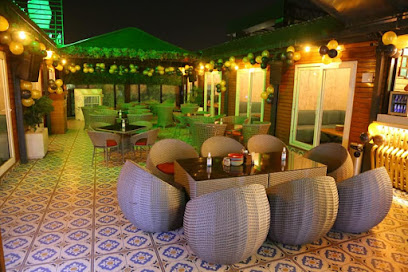
The Divine Delight Restaurant
Experience authentic Indian flavors at The Divine Delight Restaurant in Agra – where family dining meets culinary excellence.

Maruti Restaurant
Experience authentic vegetarian cuisine at Maruti Restaurant in Agra—a perfect blend of tradition and taste awaits every food lover.

Cheesy Bees
Discover culinary bliss at Cheesy Bees in Agra - where cheesy delights meet exceptional service!
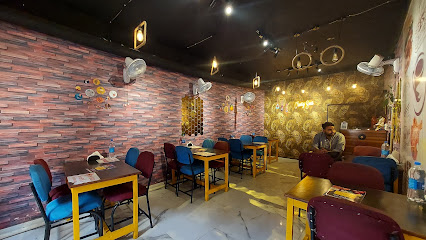
The Burger Company
Experience delicious fast food at The Burger Company in Agra - where every burger is crafted with care and served with flavor.

New Vishal Restaurant
Discover diverse culinary delights at New Vishal Restaurant in Agra – where North Indian meets Chinese and South Indian flavors.

Open House Cafe & Dhaba
Experience diverse culinary offerings at Open House Cafe & Dhaba in Agra - from Chinese noodles to Italian pizzas in a family-friendly setting.

Markets, malls and hidden boutiques
Shoppers Stop
Explore Shoppers Stop in Agra for a unique shopping experience with a variety of clothing, accessories, and more in a modern setting.

Unique Handicrafts
Discover Unique Handicrafts in Agra: A treasure trove of authentic handmade souvenirs reflecting India's vibrant culture.

Miniso agra
Discover affordable elegance at Miniso Agra, where quality meets style in a unique shopping experience.

Yourkarts.com
Explore Yourkarts.com in Agra for exceptional auto accessories and unique perfumes, blending automotive passion with aromatic luxury.

Unique Lites Furniture
Discover unique furniture and lighting solutions at Unique Lites Furniture in Agra, where style meets craftsmanship in every piece.

The Warehouse of Gifts & Souvenirs
Discover the essence of Agra at The Warehouse of Gifts & Souvenirs, where local craftsmanship meets vibrant culture, perfect for every traveler.

Ximi Vogue
Explore Ximi Vogue in Agra for a delightful shopping experience offering cosmetics, gifts, stationery, and toys in a charming atmosphere.

IDEAL HOME STORE AGRA
Explore Ideal Home Store in Agra for a captivating array of home decor, furniture, and unique accessories that transform your living spaces.

New Look Boutique
Explore a stylish selection of clothing and accessories at New Look Boutique in Agra's vibrant Shifa Market, reflecting local fashion trends.

UNIQUE FASHION HUB STORE
Uncover unique fashion accessories in Agra's vibrant Unique Fashion Hub Store, where tradition meets contemporary style.

Essential bars & hidden hideouts
The Palm Burj - Best Rooftop | Best Lounge | Best Club | Best Pub | Best Restaurant in Agra
Experience the vibrant ambiance and exquisite cuisine at The Palm Burj, Agra's premier rooftop lounge with stunning views and delightful flavors.
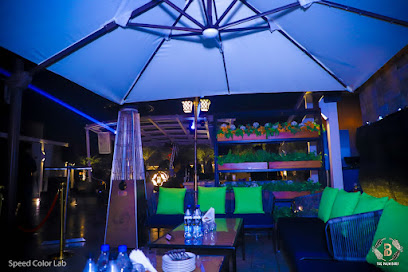
Kiskey whiskey
Experience the vibrant nightlife of Agra at Kiskey Whiskey, where delightful cuisine meets an energetic atmosphere in the heart of the city.

Folks Pub & Brewery
Discover the vibrant brew culture of Agra at Folks Pub & Brewery, where craft beers and delicious cuisine come together in a lively atmosphere.

Fakira club - Best rooftop cafe in Agra / Best rooftop lounge in Agra / Best rooftop bar in Agra
Experience Agra's best rooftop lounge at Fakira Club, where culinary delights and stunning views create unforgettable memories.

My Bar Headquarters Agra
Discover Agra's nightlife at My Bar Headquarters - a trendy bar and cafe with stunning views, delicious snacks, and an extensive drink menu.

Altitude Rooftop Restaurant & Lounge - Agra's finest rooftop terrace/ Best rooftop lounge in Agra
Experience breathtaking views and exquisite cuisine at Agra's finest rooftop restaurant, the Altitude Rooftop Restaurant & Lounge.
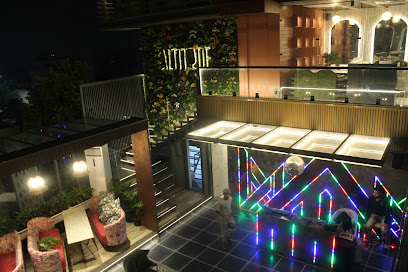
DEVIL DISCO & lounge
Experience the vibrant nightlife and diverse culinary delights at Devil Disco & Lounge, Agra's premier dining and entertainment destination.

UP80 CAFE
Discover Agra's UP80 Cafe: A cozy retreat with exquisite coffee and delicious bites, perfect for tourists exploring the city's rich history.

Surabhi Bar & Restaurant
Experience Agra's vibrant nightlife at Surabhi Bar & Restaurant, where local flavors meet lively atmosphere for an unforgettable evening.

J K bar & Restaurant - Best Bar in Agra/Hookah Lounge in Agra/Lounge & Bar in Agra
Discover the vibrant ambiance and delightful flavors at J K Bar & Restaurant, Agra's premier destination for food, drinks, and relaxation.

Local Phrases
-
- Helloनमस्कार
[namaskār] - Goodbyeअलविदा
[alvidā] - Yesहाँ
[hāṁ] - Noनहीं
[nahīṁ] - Please/You're welcomeकृपया
[kr̥payā] - Thank youधन्यवाद
[dhanyavād] - Excuse me/Sorryक्षमा कीजिये
[kṣamā kījiye] - How are you?आप कैसे हैं?
[āp kaise haiṁ?] - Fine. And you?ठीक हूँ। आप?
[ṭhīk hū̃. āp?] - Do you speak English?क्या आप अंग्रेज़ी बोलते हैं?
[kyā āp aṅgrezī bolte haiṁ?] - I don't understandमैं समझ नहीं पाया
[maiṁ samajh nahīṁ pāyā]
- Helloनमस्कार
-
- I'd like to see the menu, pleaseकृपया मेनू दिखाएं
[kr̥payā menū dikhā'eṁ] - I don't eat meatमैं मांस नहीं खाता
[maiṁ māns nahīṁ khātā] - Cheers!चियर्स!
[ciyars!] - I would like to pay, pleaseकृपया मैं भुगतान करना चाहूँ
[kr̥payā maiṁ bhugatān karnā cāhū̃]
- I'd like to see the menu, pleaseकृपया मेनू दिखाएं
-
- Help!बचाओ!
[bacā'o!] - Go away!चले जाओ!
[cale jā'o!] - Call the Police!पुलिस को बुलाओ!
[pulis ko bulā'o!] - Call a doctor!डॉक्टर को बुलाओ!
[ḍākṭar ko bulā'o!] - I'm lostमैं खो गया हूँ
[maiṁ kho gayā hū̃] - I'm illमुझे बीमारी है
[mujhe bīmārī hai]
- Help!बचाओ!
-
- I'd like to buy...मैं खरीदना चाहूँगा...
[maiṁ kharīdnā cāhū̃gā...] - I'm just lookingमैं बस देख रहा हूँ
[maiṁ bas dekh rahā hū̃] - How much is it?यह कितना है?
[yah kitnā hai?] - That's too expensiveयह बहुत महंगा है
[yah bahut mahangā hai] - Can you lower the price?क्या आप कीमत कम कर सकते हैं?
[kyā āp kīmat kam kar sakte haiṁ?]
- I'd like to buy...मैं खरीदना चाहूँगा...
-
- What time is it?अभी कितने बजे हैं?
[abhī kitne baje haiṁ?] - It's one o'clockएक बजे हैं
[ek baje haiṁ] - Half past (10)दस बजे तक
[das baje tak] - Morningसुबह
[subah] - Afternoonदोपहर
[dopahar] - Eveningशाम
[śām] - Yesterdayकल
[kal] - Todayआज
[āj] - Tomorrowकल
[kal] - 1एक
[ek] - 2दो
[do] - 3तीन
[tīn] - 4चार
[cār] - 5पाँच
[pā̃c] - 6छह
[chhah] - 7सात
[sāt] - 8आठ
[āṭh] - 9नौ
[nau] - 10दस
[das]
- What time is it?अभी कितने बजे हैं?
-
- Where's a/the...?एक/यहाँ...कहाँ है?
[ek/yahā̃...kahā̃ hai?] - What's the address?पता क्या है?
[patā kyā hai?] - Can you show me (on the map)?क्या आप मुझे दिखा सकते हैं (नक्शे पर)?
[kyā āp mujhe dikhā sakte haiṁ (nakshe par)?] - When's the next (bus)?अगली (बस) कब है?
[aglī (bas) kab hai?] - A ticket (to ....)एक टिकट (....के लिए)
[ek ṭikat (....ke lie)]
- Where's a/the...?एक/यहाँ...कहाँ है?
History of Khandari
-
Khandari's history can be traced back to its agricultural origins, with the fertile plains of Agra providing sustenance to local communities. The area's proximity to the Yamuna River made it a critical location for farming, allowing for the development of early settlements that thrived on agriculture and trade.
-
During the Mughal era, Khandari began to flourish as Agra became a prominent city in the empire. The architectural styles influenced by this period are evident in the local buildings, showcasing intricate designs and craftsmanship that reflect the grandeur of Mughal architecture, which also permeated the broader Agra region.
-
With the advent of British colonial rule in the 19th century, Khandari witnessed new cultural exchanges and economic changes. The establishment of railways and roads facilitated trade and movement, bringing diverse communities together and enriching the local culture, which became a melting pot of traditions.
-
After India's independence in 1947, Khandari transformed into a residential neighborhood, reflecting the rapid urbanization of Agra. The area's growth was marked by an increase in population and infrastructure development, leading to a blend of old and new cultural dynamics within the community.
-
Today, Khandari is characterized by its vibrant local culture, with festivals, markets, and community events reflecting the rich tapestry of life in Agra. The neighborhood continues to evolve, maintaining its historical significance while embracing contemporary influences, making it a unique part of Agra's cultural heritage.
Khandari Essentials
-
Khandari is well-connected to other neighbourhoods in Agra. If you are arriving from the Agra Cantt Railway Station, you can take a local taxi or auto-rickshaw, which will take approximately 20-30 minutes depending on traffic. Buses also run frequently from various parts of the city to Khandari, with the central bus station being a good starting point. If traveling from the Taj Mahal area, it's about a 15-minute drive by taxi.
-
Khandari is best navigated via auto-rickshaws, which are readily available and inexpensive. Bicycles can also be rented for a more local experience, and walking is a pleasant way to explore the neighbourhood. Local buses operate, but they may not be the most comfortable option for tourists unfamiliar with the routes. For longer distances, taxis are a convenient choice.
-
Khandari is generally safe for tourists, but it's wise to remain vigilant. Avoid wandering into narrow alleys or areas that seem deserted, especially at night. Be cautious in crowded markets where pickpocketing can occur. Areas with higher crime rates, particularly after dark, include certain peripheral sections near the bus stands, so it’s best to stick to well-lit and populated areas.
-
In case of an emergency, dial 112 for police assistance or 102 for medical emergencies. Local hospitals are available, but it’s advisable to have travel insurance. Pharmacies are scattered throughout Khandari for minor health issues. Always keep a list of emergency contacts handy.
-
Fashion: Do dress modestly, particularly in religious places; avoid shorts and sleeveless tops. Religion: Do respect local customs; remove shoes before entering homes or temples. Public Transport: Do offer your seat to the elderly and women; don’t engage in loud conversations. Greetings: Do greet locals with a smile and a nod; avoid overly familiar gestures. Eating & Drinking: Do try local street food; don’t drink tap water, opt for bottled water instead.
-
To experience Khandari like a local, visit the bustling markets where you can sample street food and shop for textiles. Engage with local vendors, as they often have fascinating stories to share. Consider visiting local temples during festivals for an authentic cultural experience. Early morning visits to the area provide a quieter atmosphere, perfect for exploring.
Nearby Cities to Khandari
-
Things To Do in Gwalior
-
Things To Do in Delhi
-
Things To Do in Ranthambore
-
Things To Do in Jaipur
-
Things To Do in Kanpur
-
Things To Do in Lucknow
-
Things To Do in Rishikesh
-
Things To Do in Pushkar
-
Things To Do in Shimla
-
Things To Do in Bhopal
-
Things To Do in Lumbini
-
Things To Do in Jabalpur
-
Things To Do in Jodhpur
-
Things To Do in Udaipur
-
Things To Do in Varanasi











